The interior of the room should set you up for rest, relaxation after a hard day at work. Therefore, the decor should be pleasing to the eye during the day and in the evening. The sofa or bed attracts the main attention to the room. It can be decorated with a bedspread made by yourself, choosing a favorite pattern, favorite colors and a suitable option for sewing or knitting.
What are the manufacturing techniques?
It is not difficult to make a bedspread with your own hands. In addition, it is much more profitable than ordering it from a studio. Such products are made using various techniques:
- Patchwork.
- Stitch.
- Knitting.
- Crochet.
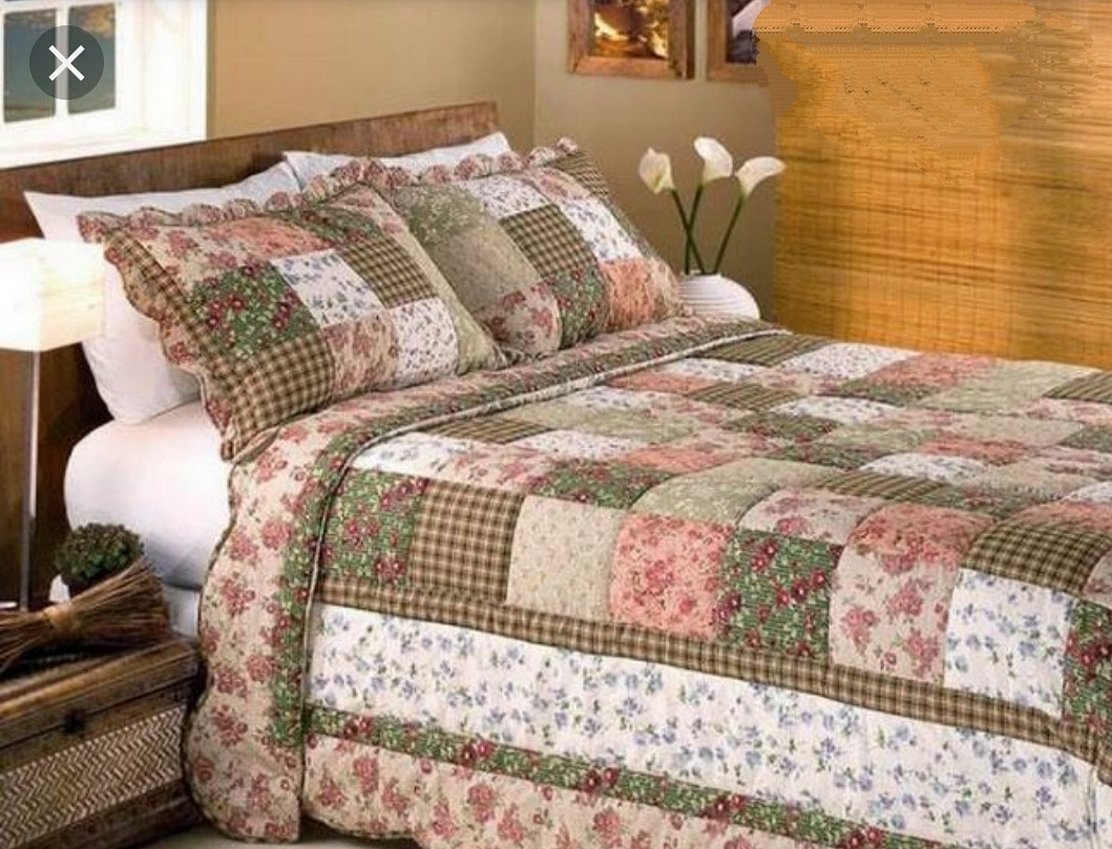
Each of these options allows you to make an interesting, beautiful product that will look great and will be pleasant to cover yourself with.
Patchwork
A do-it-yourself patchwork bedspread is a colorful, beautiful and artistically competent piece of textile. It won't be quick to sew, but it's worth it.
To make a bedspread, you need to proceed in stages:
- Determine the size of the product;
- Choose a suitable color scheme depending on the surrounding interior;
- Lay out the fabric pieces: pieces, squares, strips, scraps;
- Prepare the fabric - the future back of the bedspread;
- Lay out the necessary tools: scissors, threads, needles, sewing machine, pins, pencil (chalk), ruler with squares or square template.
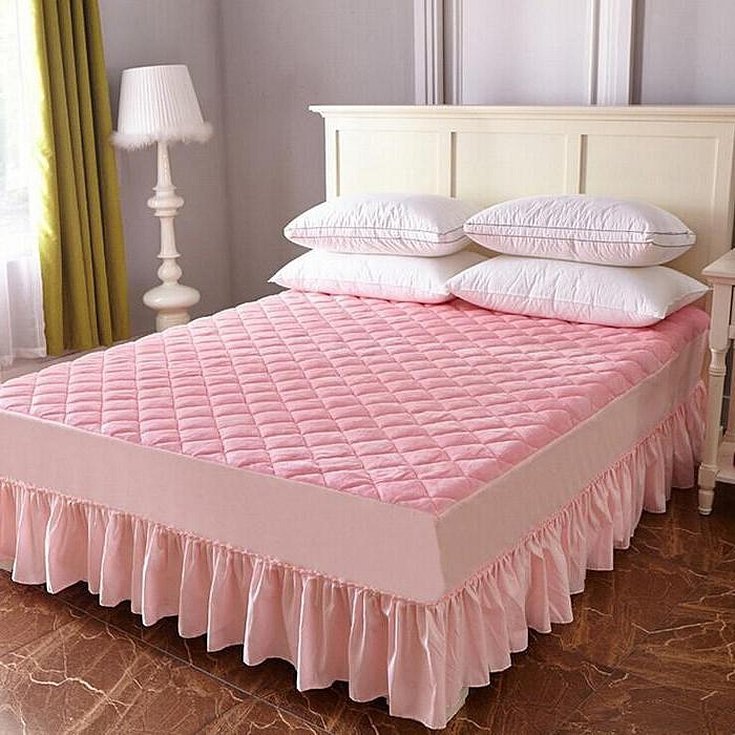
Templates can be of any shape. If you are a beginner, it is better to start with the simplest geometric figure. Otherwise, having taken on an impossible task, you can make an ugly thing or simply ruin a lot of fabric. It is also necessary to decide what pattern will be on the product (and whether there will be one at all).
The material must be prepared before use. To do this, soak the fabric in hot water for about ten minutes, then rinse in warm water. It is even better to additionally starch and iron the future blanks.
Quilted bedspread with frill
A quilted bedspread is ideal for any room. It is best to choose cotton, bamboo, cotton as the main fabric. If the environmental friendliness of the material is not the most important thing, you can use synthetic, mixed fabrics (for example, curtain fabric, satin, etc.).
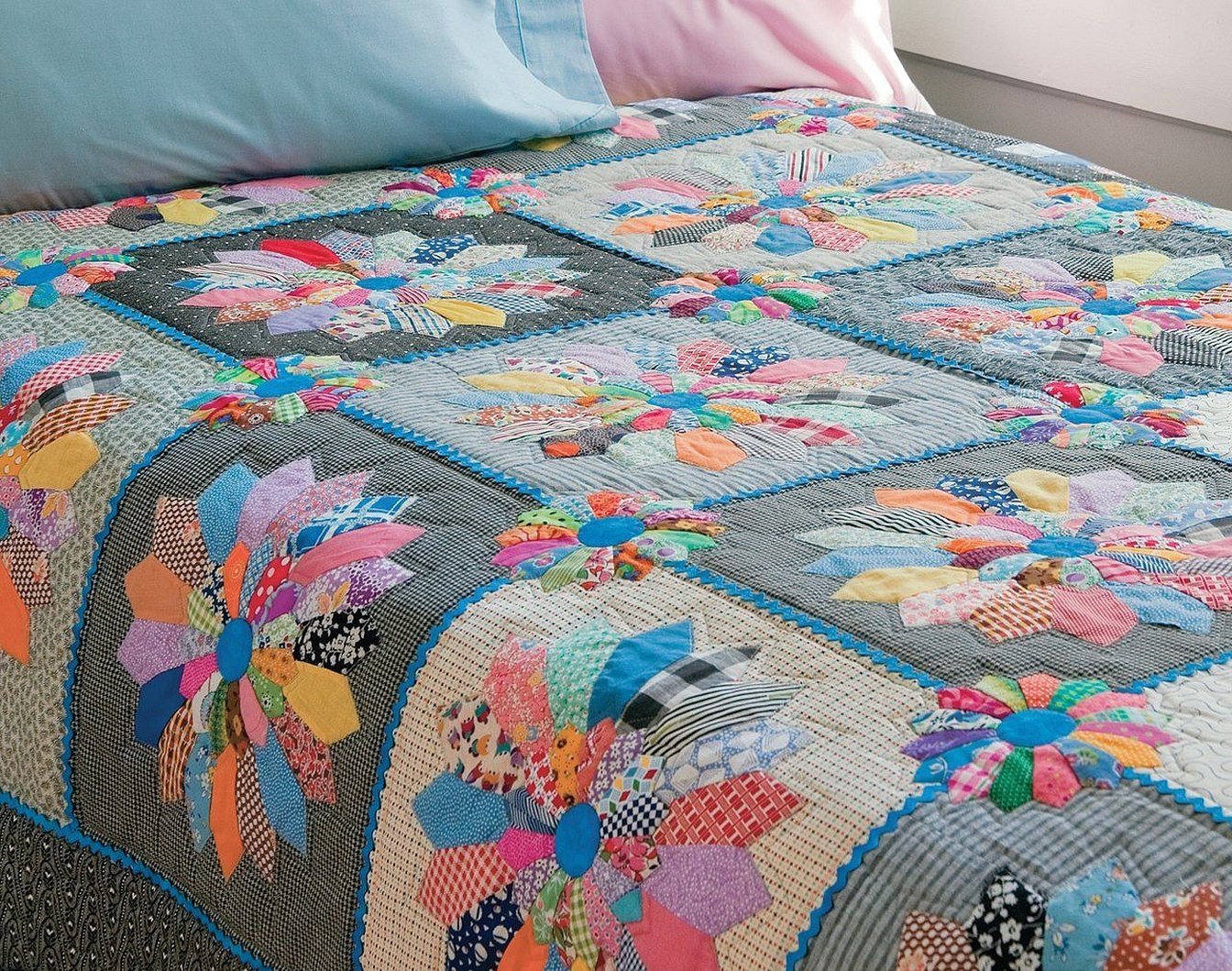
Quilted bedspreads are best made from fabrics used for curtains. They are denser, wider, and more wear-resistant. If you use materials with a width of 220 to 24 centimeters, you can make a product without additional seams or joints.
The lining fabric in such textiles should also be thick so that it does not wear out quickly. In addition, synthetic padding is needed as a filler. When choosing a thick material, folds from a hastily thrown-on blanket will not be visible, the stitching will be more clearly visible, and the product will be warmer.
The main thing is to choose the right needle and stitch width. Thin fabrics require thin devices. Cotton and similar materials can be sewn with a thick needle and the widest stitches possible.
With knitting needles
You can knit a bedspread with your own hands using knitting needles. To do this, you need to prepare the necessary materials. The product can be made from the following types of yarn:
- wool;
- flax;
- cotton fabric;
- synthetics;
- silk.
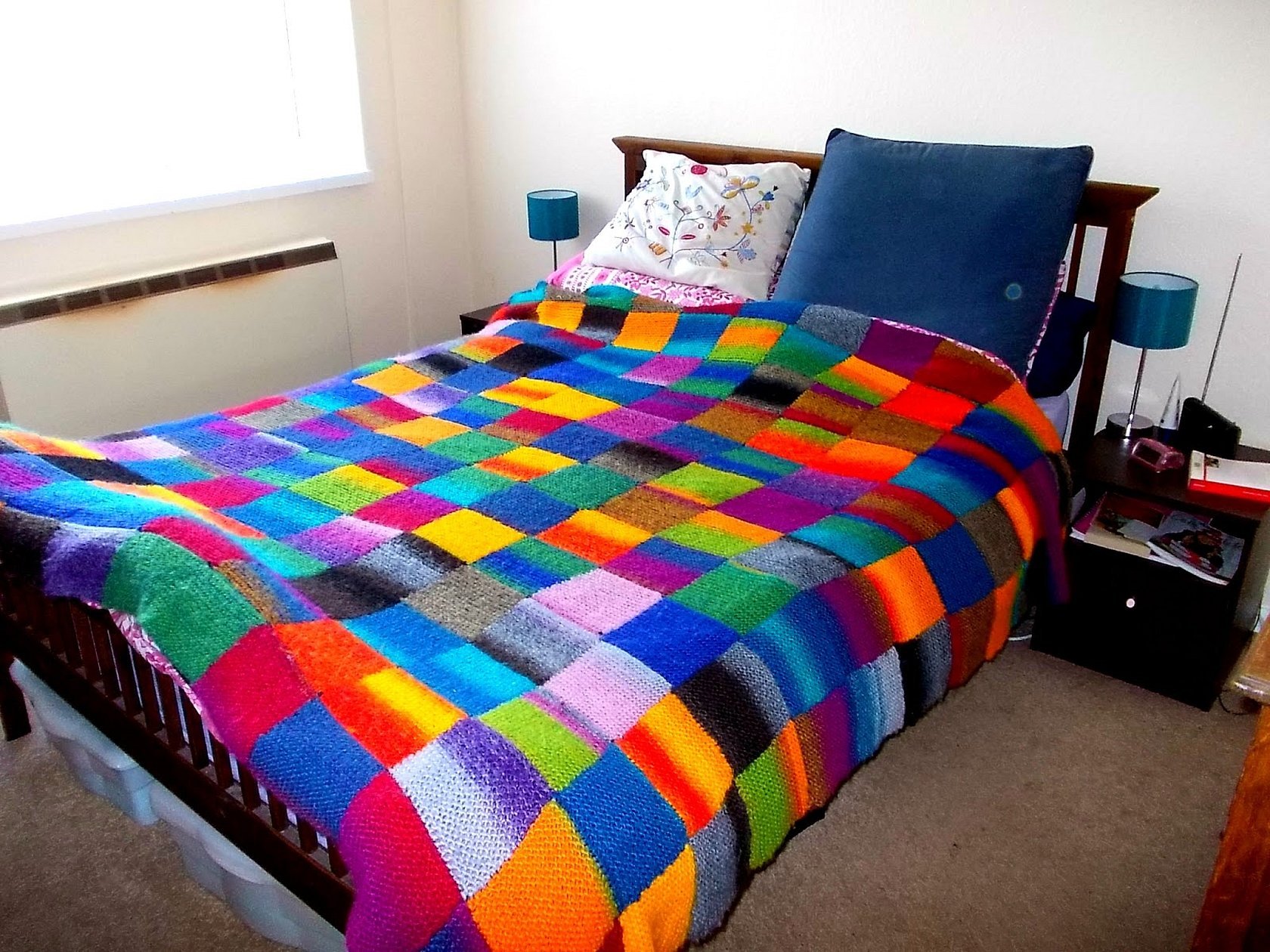
The blanket can be knitted from any type of yarn. The main thing is not to add metallic threads. The material is selected depending on the purpose of the product, its quantity - on the selected pattern and knitting option. If the bedspread is to be decorated, additional finishing material will be needed.
Important! When knitting, it is not recommended to use yarn that has been lying around for a long time. The frayed fabric will look sloppy.
Tools for work:
- knitting needles (metal, bone, plastic, wooden). High-quality products are well polished, with not very sharp or blunt ends. The knitting needles should be selected twice as thick as the yarn;
- knitting pins for securing stitches;
- row counting device;
- thimble for facilitating knitting of jacquard-type patterns;
- bobbins that make it easier to work with multi-colored yarn;
- marking rings that fix the beginning of a row or the location of a pattern;
- tips of different colors to prevent the loops from falling off;
- scissors with sharp ends for carrying out additional necessary work.
To design the drawings and make patterns, you may need additional tools (notebook, iron, drawing devices). It is better to knit the blanket in elements (squares, stripes), and then connect them together.
The sequence for sewing a blanket with knitting needles is as follows:
- Studying the drawing.
- Knitting a small sample of the pattern by casting on and securing stitches according to the diagram.
- Cast on the required number of loops, not counting the first and last.
- Knitting loops.
- Joining strips together by knitting or sewing.
- Finishing the edges after finishing the work.

To give the product a beautiful look, after finishing the work, it is necessary to trim the edges of the product. The decoration options can be different:
- edging with a ribbon of a matching or contrasting color. For these purposes, you can use a ribbon;
- decoration with small pompoms of different colors. For this, you can knit an additional row (or sew them on);
- sewing on ribbons with tassels;
Some housewives decorate bedspreads with different scraps of fabric. You can watch various master classes and interesting ideas for decorating bed linen.
Crochet
To crochet a blanket, you will need the following tools:
- threads for crocheting things or special yarn made from knitwear;
- beads, ribbons (if necessary);
- sewing threads (dresses);
- hook of the required size;
- Large eye needle for joining squares and sewing on decorative elements.
The final question, how to crochet a bedspread, these are the stages of work:
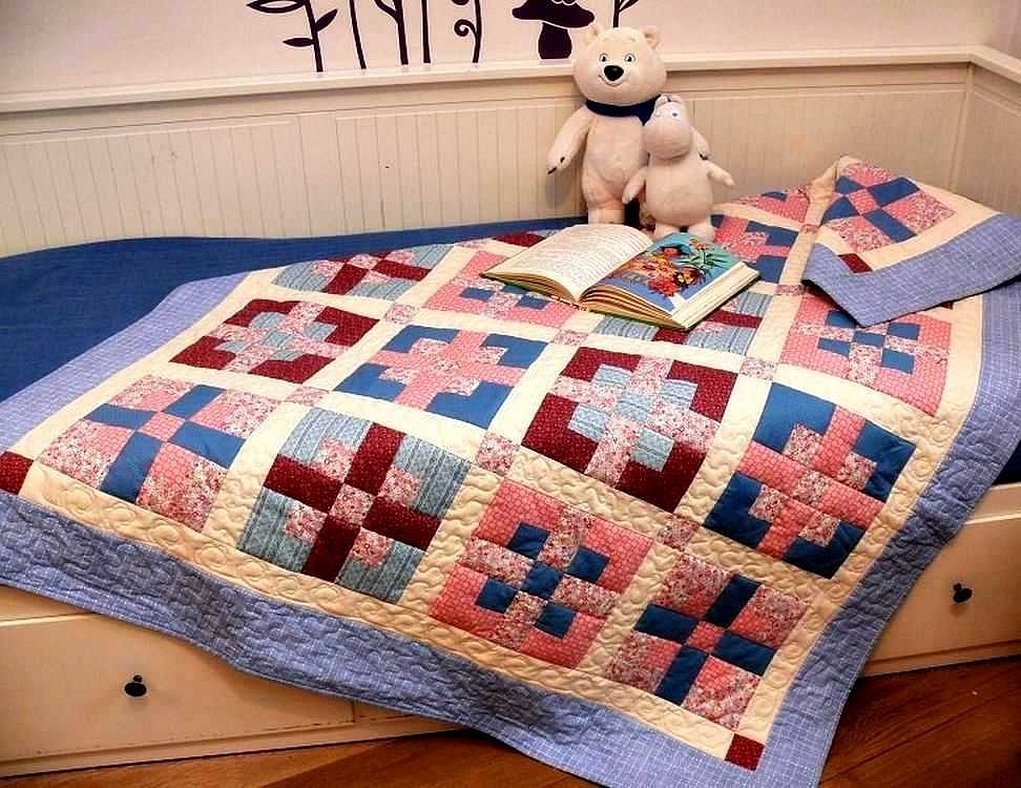
- Choose a knitting pattern. You can make identical squares or different types of figures.
- Knit the required number of elements.
- Connecting squares to each other.
- Binding the blanket around the perimeter. You can make an openwork braid or tie the edges with single crochets. Additionally, you can decorate the product with beads, appliques, crocheted flowers or ribbons, threading them through the spaces between the single crochets.
Selecting a model and fabric
After choosing the method of how to sew a bedspread, you need to decide on the model and fabric.
Important! If the blanket is being sewn for a child's room, you need to select fabrics with a pleasant, delicate texture.
A bedspread for a bedroom and other rooms can be made flowing, light, without lining, or a dense, quilted item of a bed set can be sewn. You need to choose materials depending on the owner's preferences and the style of the room.
You can make a double-sided bedspread. If both surfaces are the same, you can cover the bed with either side. If the different sides have different colors or patterns, you can change the appearance of the piece of furniture by turning the product over.
A bedspread decorated with various patterns or decorative elements (lace, ribbons, flounces, puffs) will add coziness to the room and create an atmosphere of romance.
Important! Using a large number of textile elements in the lower part of the furniture will allow you to hide the frame of the sofa or bed.
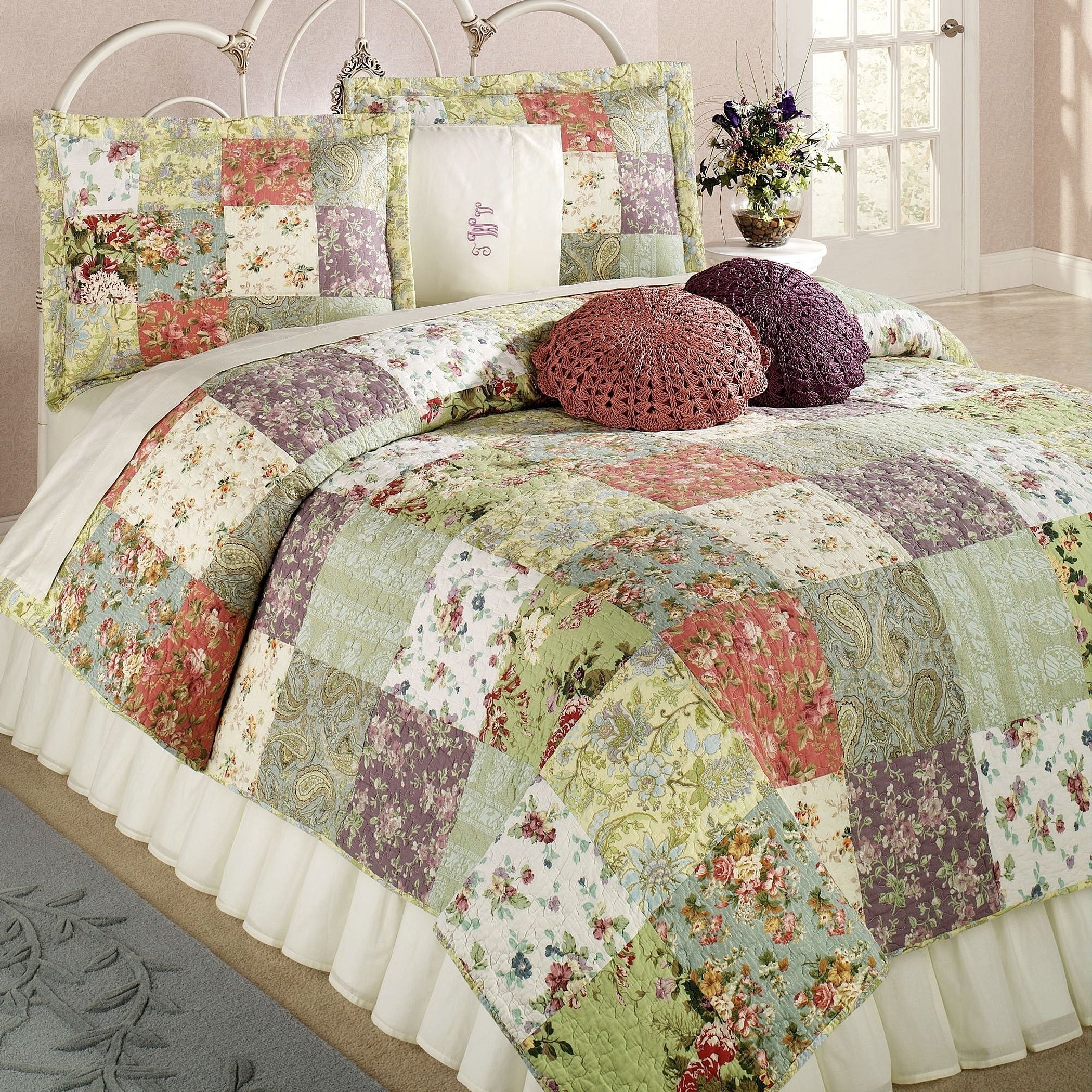
Using silk, satin fabric, tapestry for bed will help add sophistication to the room. If the fabric is shiny or gilded, the room will become even more luxurious.
A thick fleecy fur or wool product will help to additionally insulate the bed, make it softer and more comfortable. A bedspread made using stitches will create a well-groomed, cozy atmosphere, add coziness and thermal protection to the room.
The better the quality of the material used, the more pleasant the blanket will be for all family members to use.
Selecting the color of the product
The choice of color should depend on the style, lighting, size of the room or season of the year. When choosing a range of shades, you need to consider the following features:
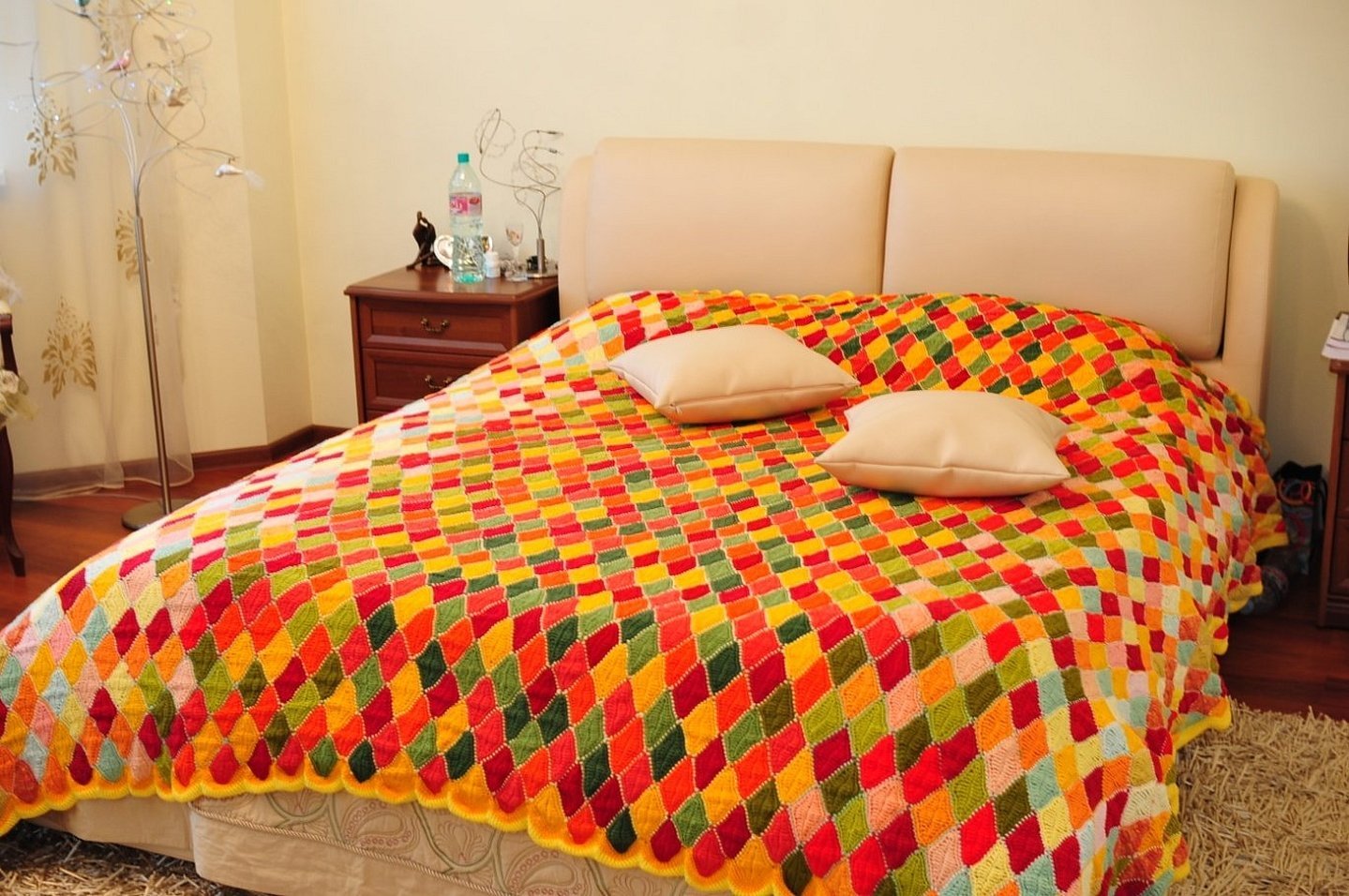
- A blanket cannot be a source of contrast (unless it is a special design technique). In a small room, a sofa should not stand out as a colorful spot, otherwise it will visually fill the entire room. It is better to choose a thing that will be similar in color to the rest of the items.
- The degree of illumination of the room plays an important role. In dim light, you need to choose light, warm colors of fabric. If the room is light, you can give free rein to your imagination in choosing shades.
- In large rooms, fabrics with iridescent and metallic sheen look good. In small rooms, they look out of place.
- To add variety to the interior, you can use fabrics with patterns.
- Warm shades will give the room coziness and a feeling of freshness. Pastel colors will visually increase the boundaries of the room.
If you take these recommendations into account when choosing fabric, the bedspread will decorate any interior.
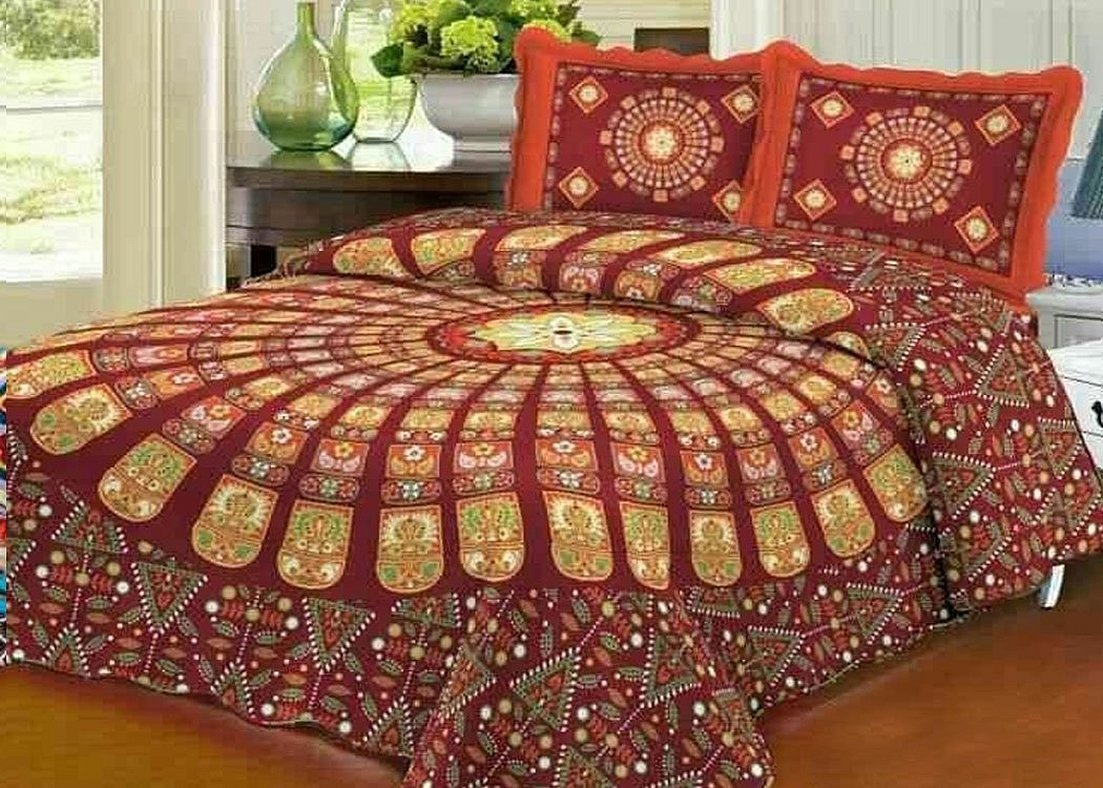
Calculation of fabric consumption
To calculate the material consumption, you need to make key measurements. The size of the future bedspread is determined as follows:
- Use a centimeter to measure the width, length and height of the bed;
- Make a scale drawing of the future product in a checkered notebook. The blanket will be drawn as a rectangle, with additional space for the frill marked on the sides;
- During the drawing process, the place for allowances and material fit is marked (from three to five centimeters);
- The calculation of the material for the top of the blanket is as follows: length, width, a few extra centimeters for seams. If there is a frill, the main length of the strip increases by one and a half times.
If you calculate the fabric correctly, you won’t need to buy additional material and sew it to the main piece, leaving seams.
DIY Bedspread Pattern
The drawing can be done in a notebook in a grid. A rectangle is drawn, and the width and length of the future product are marked on its sides. Ruffles, if any, are also indicated.
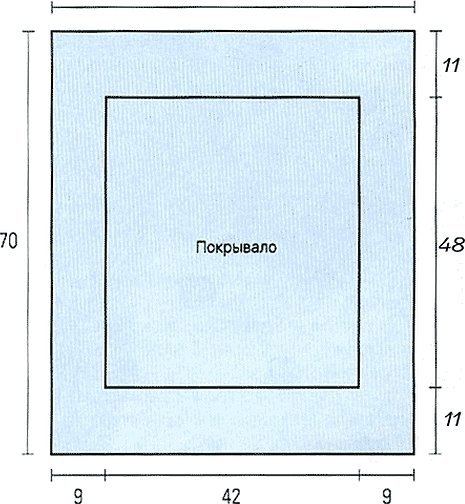
In the process of drawing the pattern, five-centimeter frills are taken into account on all sides for seams and processing of the edges of the parts. When planning the pattern of a quilted blanket, it is necessary to mark the lines of future stitches on the drawing.
Sewing the product
The instructions for cutting and sewing the product are simple. It is most convenient to cut the fabric by folding it in half so that the length of the canvas is divided exactly in half along the fold. After this, you need to smooth out the material and pin it together. You need to cut on a flat surface.
When cutting, the frill can be made from the remaining scraps. The main thing is to cut the set elements in one direction. If there is fabric for the lining, it is cut in the same way as the basic parts.
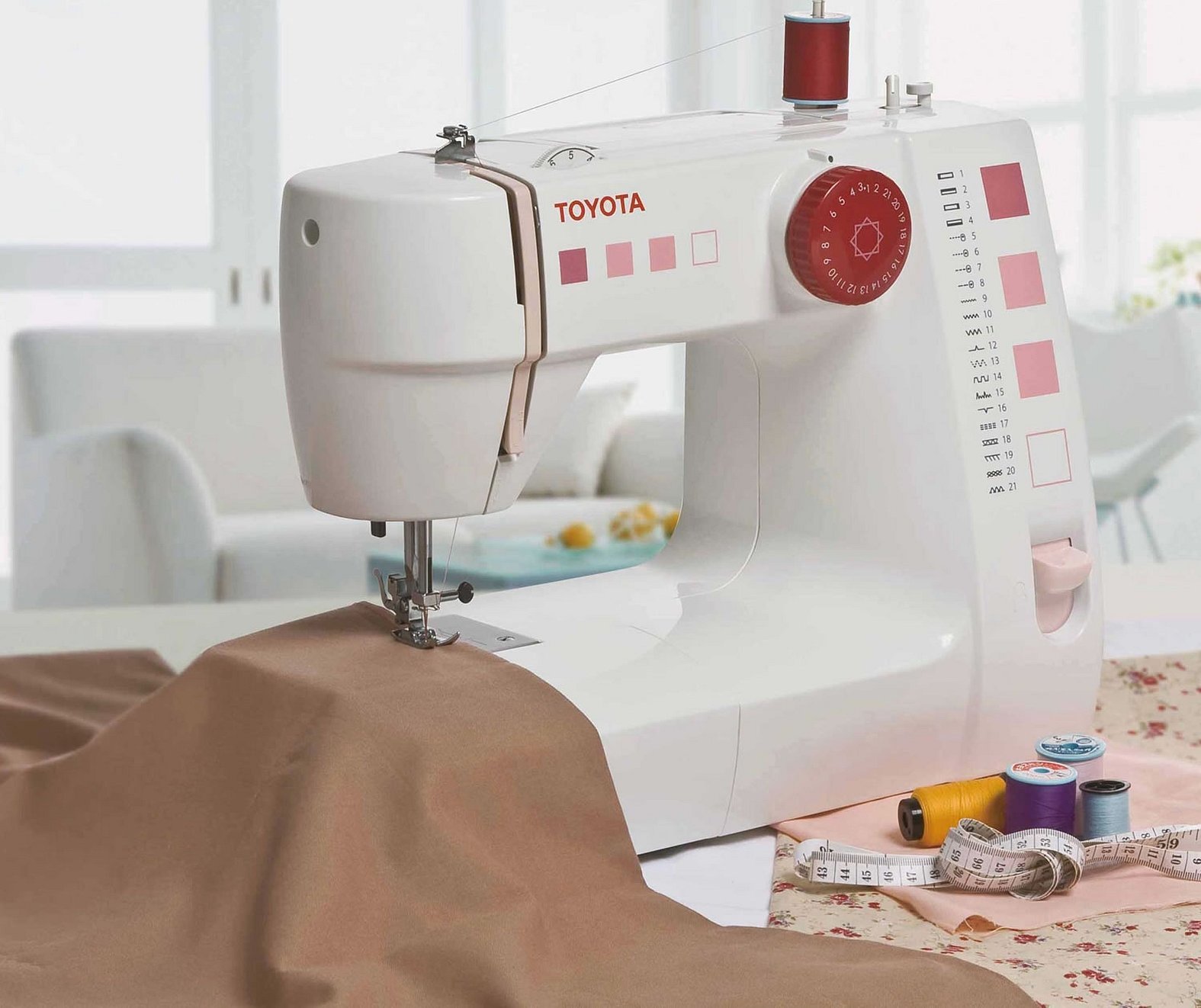
The stitching is done as follows. The base is connected to the frill on the machine. The parts are placed with the wrong side up. If there is a lining in addition to the covering, it is stitched together with the base, in one layer.
It is not difficult to sew a bedspread at home. If you have no experience, it is better to make a simple product, without a complex pattern and frills. In the future, you can complicate the models.




